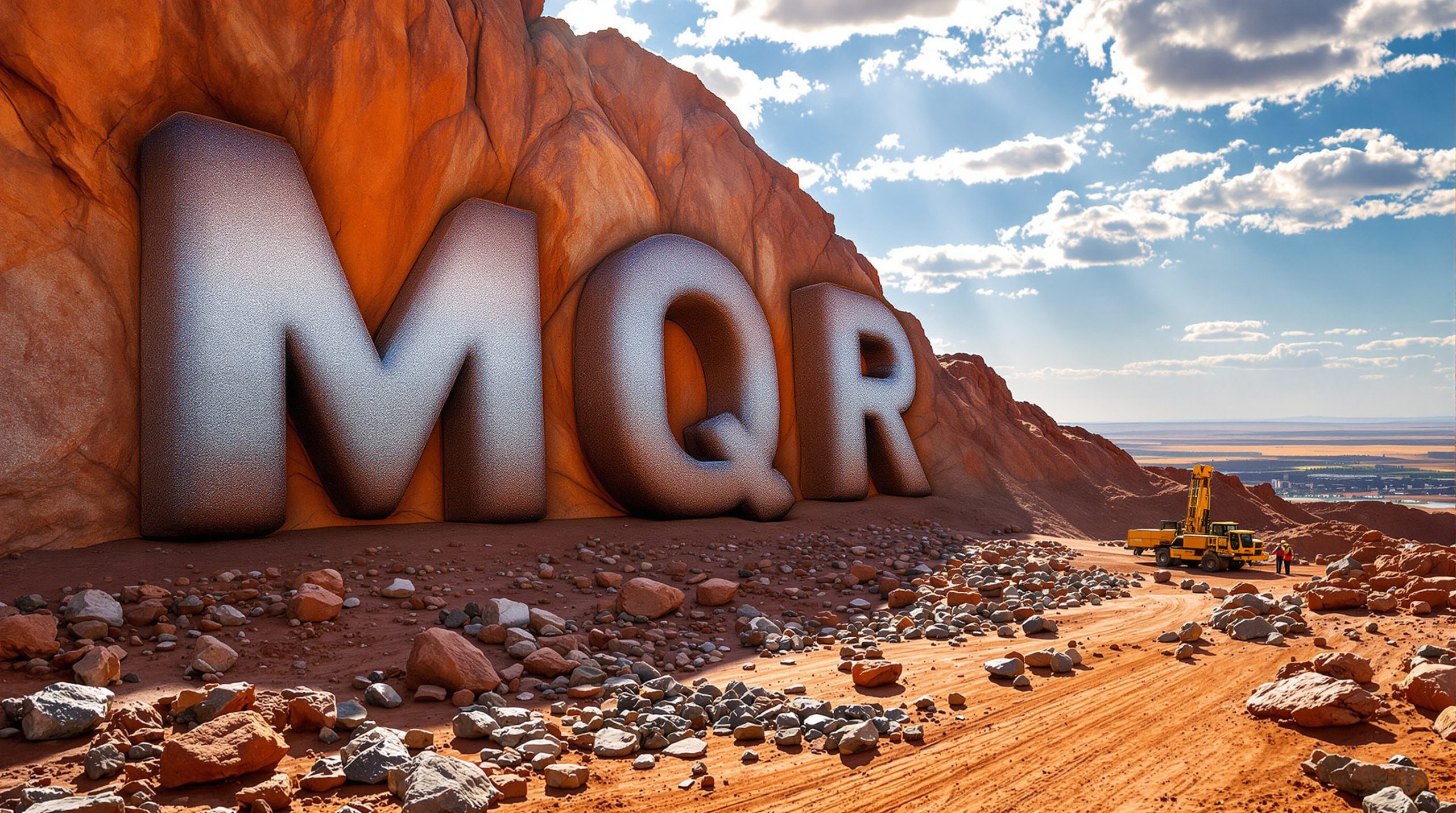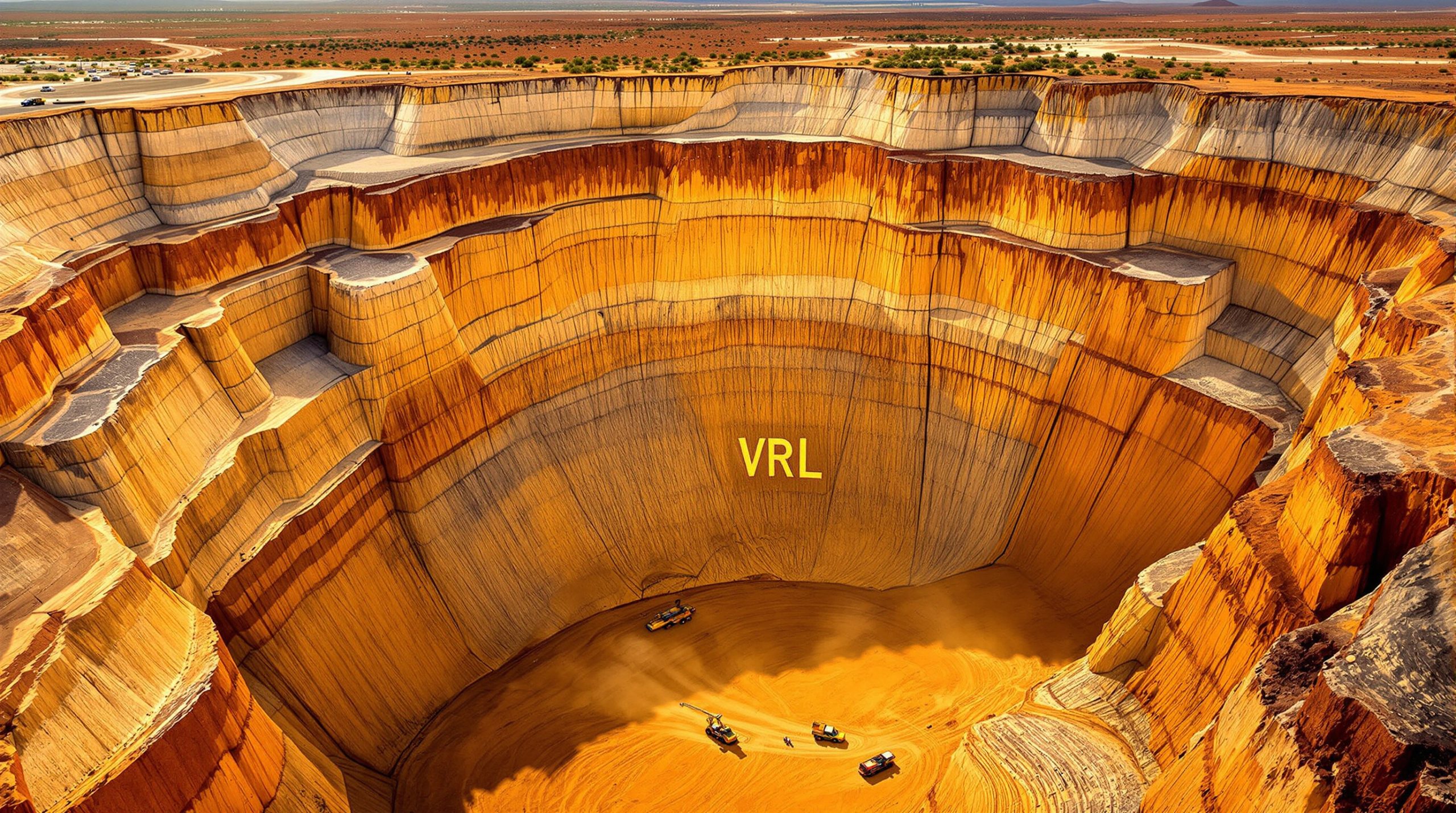Gold Rush at Oonagalabi: Litchfield Minerals Uncovers Two Distinct Mineral Systems
Litchfield Minerals Limited (ASX: LMS) has reported compelling assay results from its Phase 1 RC drilling campaign at the Oonagalabi Project in the Northern Territory, confirming a potentially large-scale polymetallic system with exciting gold-silver-bismuth mineralisation. This gold discovery by Litchfield Minerals has shifted the company's exploration focus to the "Bomb Diggity" magnetic intrusion, which appears to be the source of a secondary gold mineralisation event.
Major Discovery: Two Mineral Systems in One Location
The Phase 1 drilling program has uncovered two separate and compelling mineralisation styles at Oonagalabi:
- A widespread Cu-Zn system extending over 3km strike and 1km width
- A gold-silver-bismuth system associated with intense magnetite alteration
Most significantly, the gold-bearing system appears to be entirely separate from the copper-zinc mineralisation, with the magnetic intrusion "Bomb Diggity" now emerging as the priority target. The gold-rich zone is believed to represent a second, intrusion-related mineral event potentially similar to IOCG-style systems seen at Tennant Creek.
"We're genuinely excited by the discovery of gold within the high-magnetic zones at Oonagalabi, particularly given its spatial and geophysical link to the large Bomb Diggity interpreted intrusion," commented the Managing Director. "This opens a new exploration front and the potential scale of the underlying magmatic-hydrothermal system is something we believe could add immense value to shareholders."
Drill Results Highlight Extensive Mineralisation
The six-hole RC drilling program (1,646m) delivered impressive intercepts across both mineral systems:
Gold-Silver-Bismuth Highlights:
- OGRC002: 15m @ 0.45 g/t Au, 0.17% Bi, 1.09 g/t Ag, 0.35% Cu, 0.12% Zn from 50m
- Including: 1m @ 2.86 g/t Au, 0.84% Bi, 2 g/t Ag from 58m
Copper-Zinc System Highlights:
- OGRC003: 53m @ 0.55% Cu, 0.44% Zn, 2.99 g/t Ag, 0.059 g/t Au from 93m
- Including: 14m @ 1.32% Cu, 0.86% Zn, 7.17 g/t Ag from 104m
- OGRC004: 63m @ 0.45% Cu, 0.36% Zn from 44m plus multiple other mineralised zones
- OGRC005: 11m @ 0.5% Cu, 1.43% Zn from 96m
What makes these results particularly compelling is the correlation between mineralisation and the high-chargeability IP model announced in March 2025, validating the company's geophysical targeting methods.
Understanding IOCG Deposits
Iron Oxide Copper Gold (IOCG) deposits are significant sources of copper and gold globally. These systems typically feature:
- Iron oxide minerals (magnetite or hematite) in abundance
- Economic concentrations of copper and gold
- Hydrothermal alteration related to intrusive activity
- Formation along major structural corridors
The gold-silver-bismuth mineralisation at Oonagalabi shows several hallmarks of IOCG-style deposits, particularly the association with intense magnetite alteration (up to 20%) and structural controls. This style of mineralisation has produced major mines in Australia, including Olympic Dam and Prominent Hill.
Key Characteristics of IOCG Deposits
| Feature | Description | Oonagalabi Indicators |
|---|---|---|
| Iron Oxides | Abundant magnetite or hematite | Up to 20% magnetite in gold-bearing zones |
| Metal Association | Cu-Au with variable Ag, Bi, U | Au-Ag-Bi with Cu association observed |
| Alteration | Sodic, potassic, iron-rich | Intense magnetite alteration present |
| Structural Control | Major fault zones or shears | Structurally controlled mineralisation |
| Geophysical Signature | Strong magnetic and/or gravity anomalies | "Bomb Diggity" magnetic-gravity anomaly |
Two Distinct Mineral Systems Uncovered
The drilling program has confirmed that two separate and compelling mineralisation styles exist at Oonagalabi:
System 1: Copper-Zinc Mineralisation
- Hosted in calc-silicate units and marble of the Oonagalabi Formation
- Pre-dates folding and high-grade metamorphism
- Extends over 3km strike length and 1km width
- Geometry more consistent with a SEDEX-style system, though skarn-type origin remains possible
System 2: Gold-Silver-Bismuth Mineralisation
- Associated with intense magnetite alteration (up to 20% in OGRC002)
- Overprints earlier Cu-Zn mineralisation
- Chemically and temporally distinct from the Cu-Zn system
- Points to a second, intrusion-related mineral event
- Potentially similar to IOCG-style systems like those at Tennant Creek
The presence of two distinct mineral events—early base metals and later gold-rich magnetite—mirrors the multi-phase systems seen across the Mount Isa Province and highlights the significant potential at Oonagalabi.
Next Steps: Targeting the "Bomb Diggity"
With the magnitude of both mineral systems now better understood, Litchfield is shifting focus to locating the source of mineralisation. Ground gravity surveys over the Bomb Diggity target have outlined multiple density anomalies within and around the pipe-like magnetic body, potentially indicative of sulphide-rich mineralisation.
A VTEM Max survey is scheduled for July 2025, designed to detect:
- Conductive feeder structures potentially hosting semi- to massive sulphides
- Remobilised sulphide breccias, analogous to those at the Jervois deposit, 150 km to the north-northeast
Phase 2 drilling will target:
- The western magnetic flank of Oonagalabi to test the Au-Ag-Bi zone
- The Bomb Diggity gravity-magnetic anomaly, the potential source of the gold-rich event
Correlation with Geophysical Targets
The mineralisation encountered in the drilling program shows strong spatial correlation with the IP model announced in March 2025. The chargeability anomalies identified through IP surveying have proven to be reliable indicators of mineralisation, with all six drill holes intersecting significant mineralisation when targeting these anomalies.
This correlation validates Litchfield's exploration approach and provides confidence in the company's ability to target potential high-grade zones within the broader mineralised system.
Why Investors Should Watch Litchfield Minerals
The gold discovery by Litchfield Minerals of two distinct mineral systems at Oonagalabi represents a significant development for Litchfield Minerals. The presence of gold mineralisation associated with the Bomb Diggity magnetic intrusion opens up a potentially more valuable exploration front beyond the already substantial copper-zinc system.
The combination of:
- Extensive copper-zinc mineralisation across a large system
- A potentially separate gold-silver-bismuth system
- Strong correlation between mineralisation and geophysical anomalies
- Multiple untested targets
creates a compelling investment case for a junior explorer with 100% ownership of the project.
Litchfield Minerals appears well-positioned to advance this multi-commodity discovery, with planned geophysical surveys and Phase 2 drilling likely to deliver news flow in the coming months. For investors interested in early-stage exploration with demonstrated mineralisation, Litchfield offers exposure to both base metals and precious metals in a single project.
The company's focus on critical minerals, including copper which is essential for the renewable energy transition, also aligns with growing market demand for these commodities.
Regional Significance
The Oonagalabi project is located in the Northern Territory, approximately 125km northeast of Alice Springs. The project area lies within the Harts Range, which consists of multiply deformed and metamorphosed sedimentary and igneous intrusive rocks.
The discovery at Oonagalabi adds to the growing recognition of the Northern Territory as a significant mineral province with potential for large-scale deposits. The proximity to the Jervois deposit (150km to the north-northeast) provides a relevant nearby analogue for the type of remobilised sulphide breccias that Litchfield is targeting.
Looking Ahead
Litchfield Minerals has outlined a clear path forward for the Oonagalabi project. The upcoming VTEM Max survey in July 2025 will be crucial in identifying conductive targets that could represent high-grade feeder structures or remobilised sulphide accumulations.
Phase 2 drilling will then test both the western magnetic flank of Oonagalabi, where gold-silver-bismuth mineralisation has been identified, and the Bomb Diggity magnetic-gravity anomaly, which is believed to be the potential source of the gold-rich mineralising event.
With multiple exploration fronts now open and a better understanding of the mineralisation styles present at Oonagalabi, Litchfield Minerals is well-positioned to advance this promising project and potentially deliver significant value to shareholders in the coming months.
Ready to Invest in Litchfield's Gold-Copper Opportunity?
Don't miss this compelling dual mineral system opportunity at Oonagalabi. With significant gold-silver-bismuth mineralisation alongside extensive copper-zinc deposits, Litchfield Minerals (ASX: LMS) offers a unique investment proposition in the critical minerals space. To learn more about this promising discovery and stay updated on the upcoming VTEM Max survey and Phase 2 drilling results, visit www.litchfieldminerals.com.au today.




